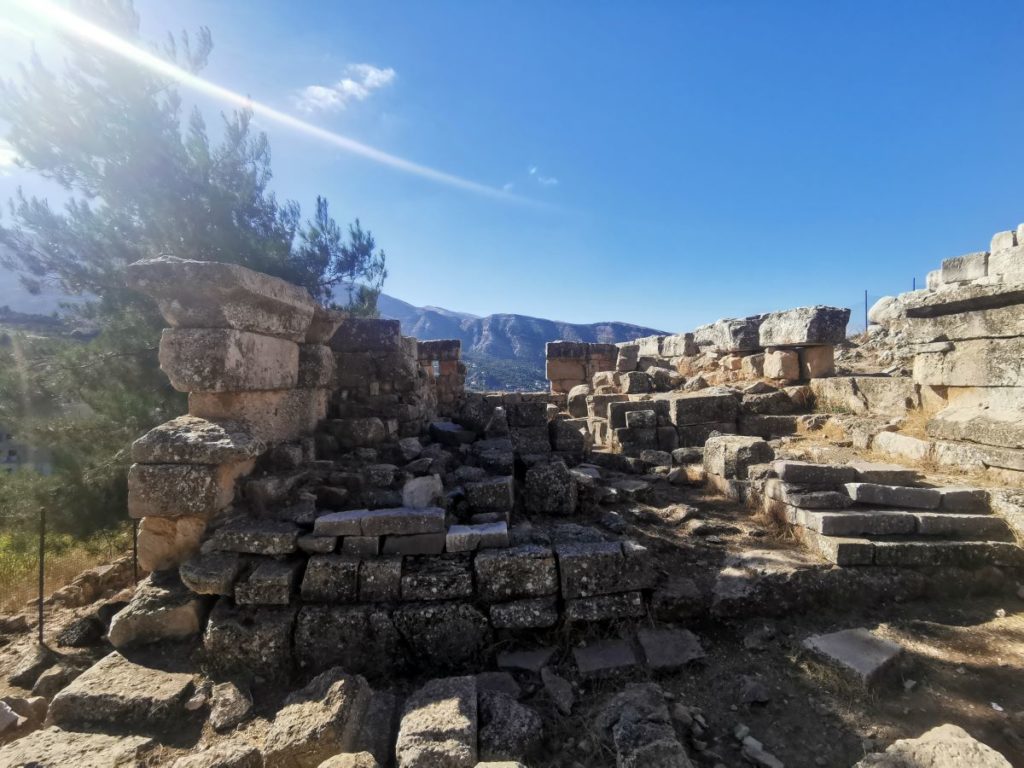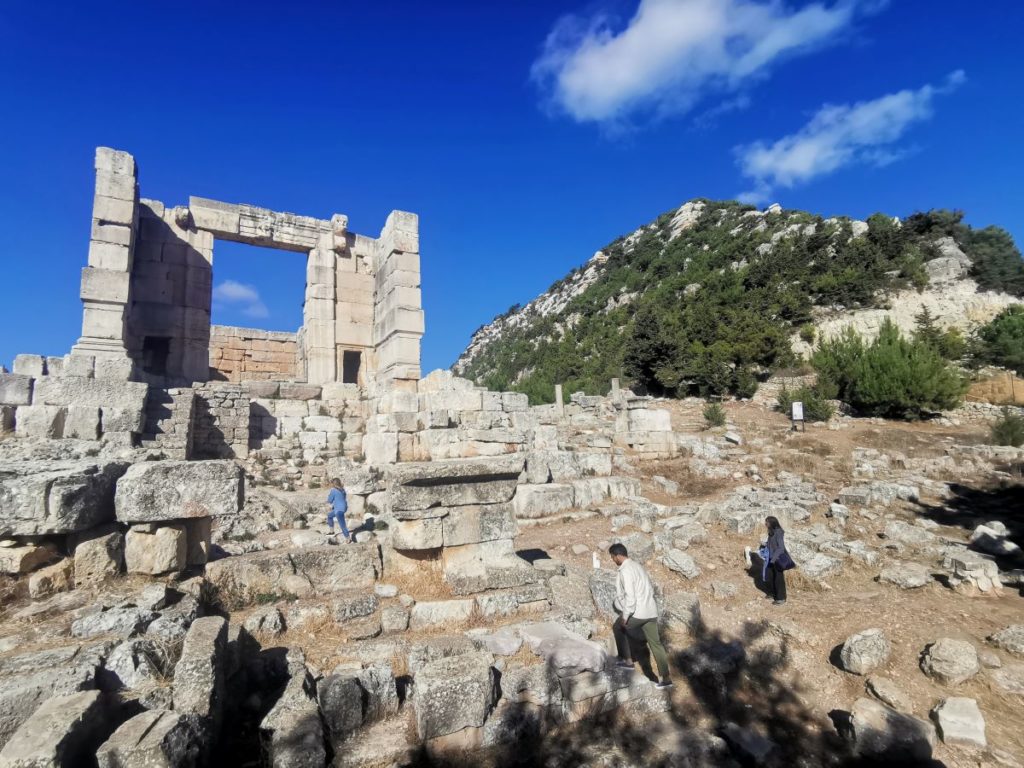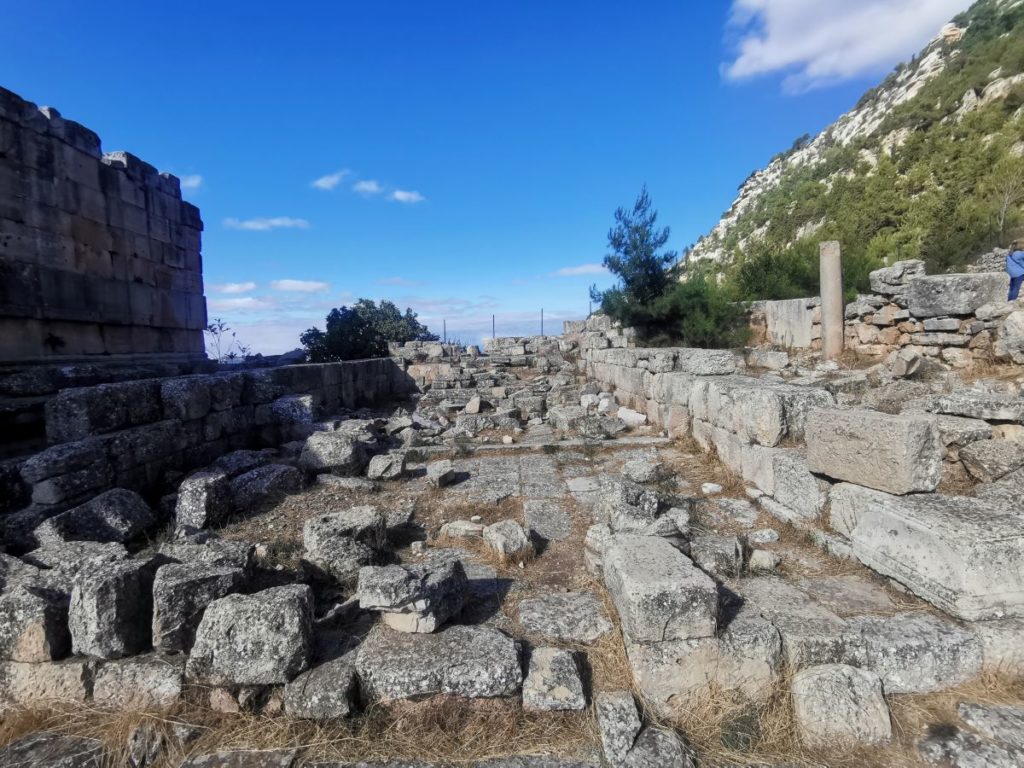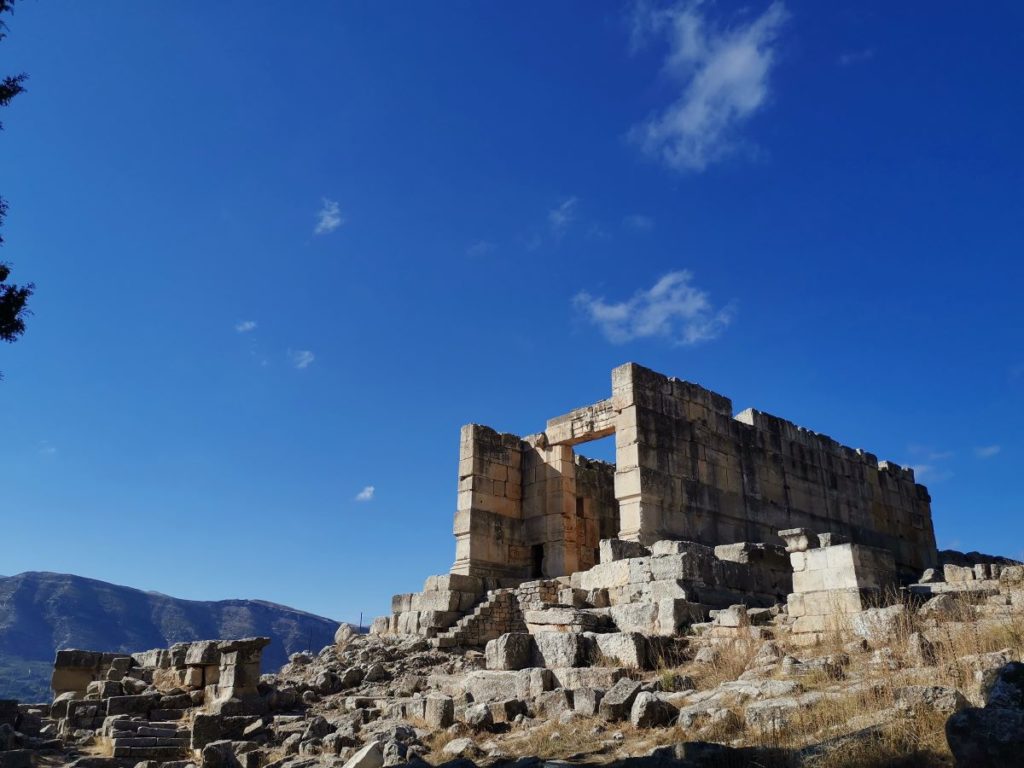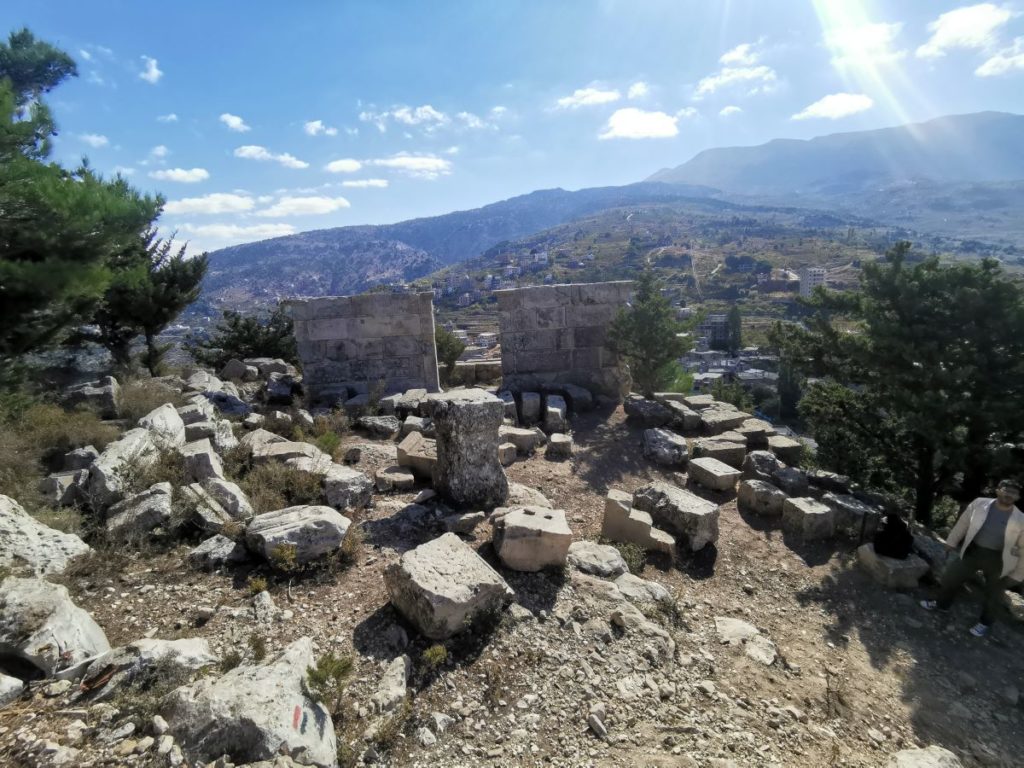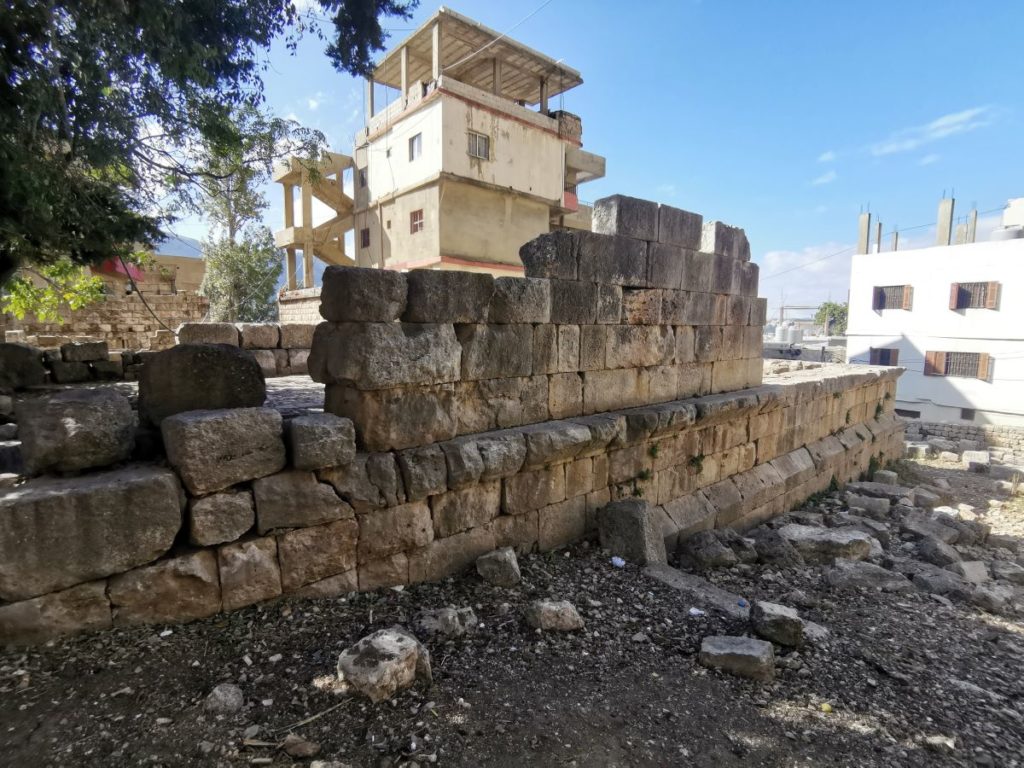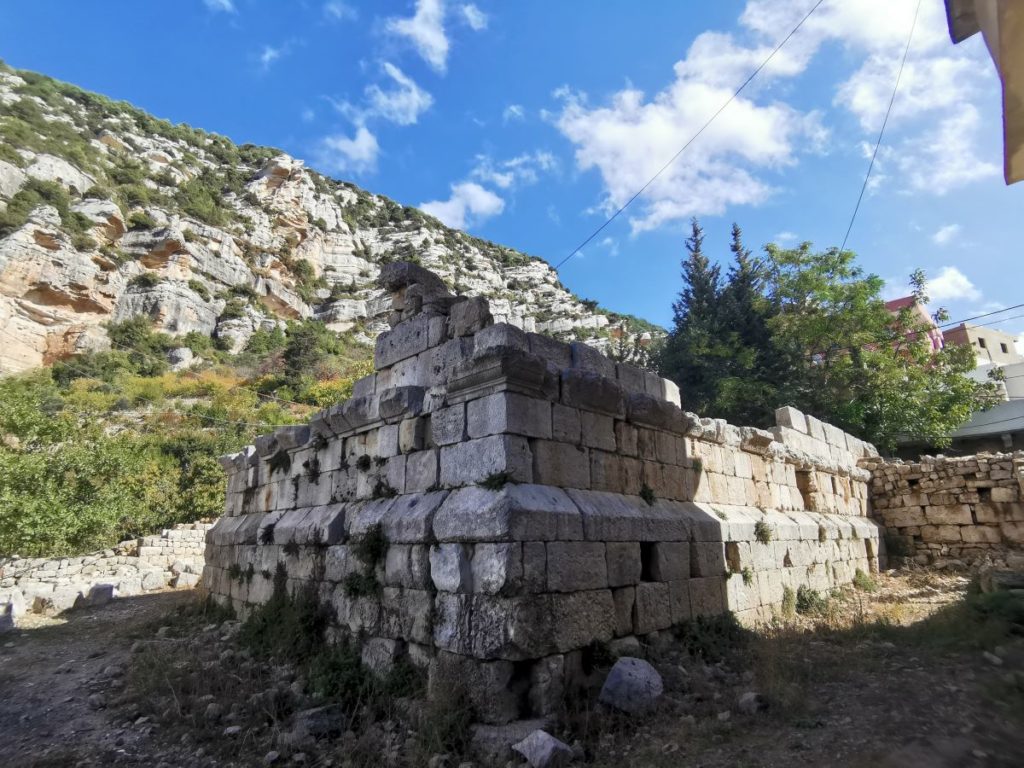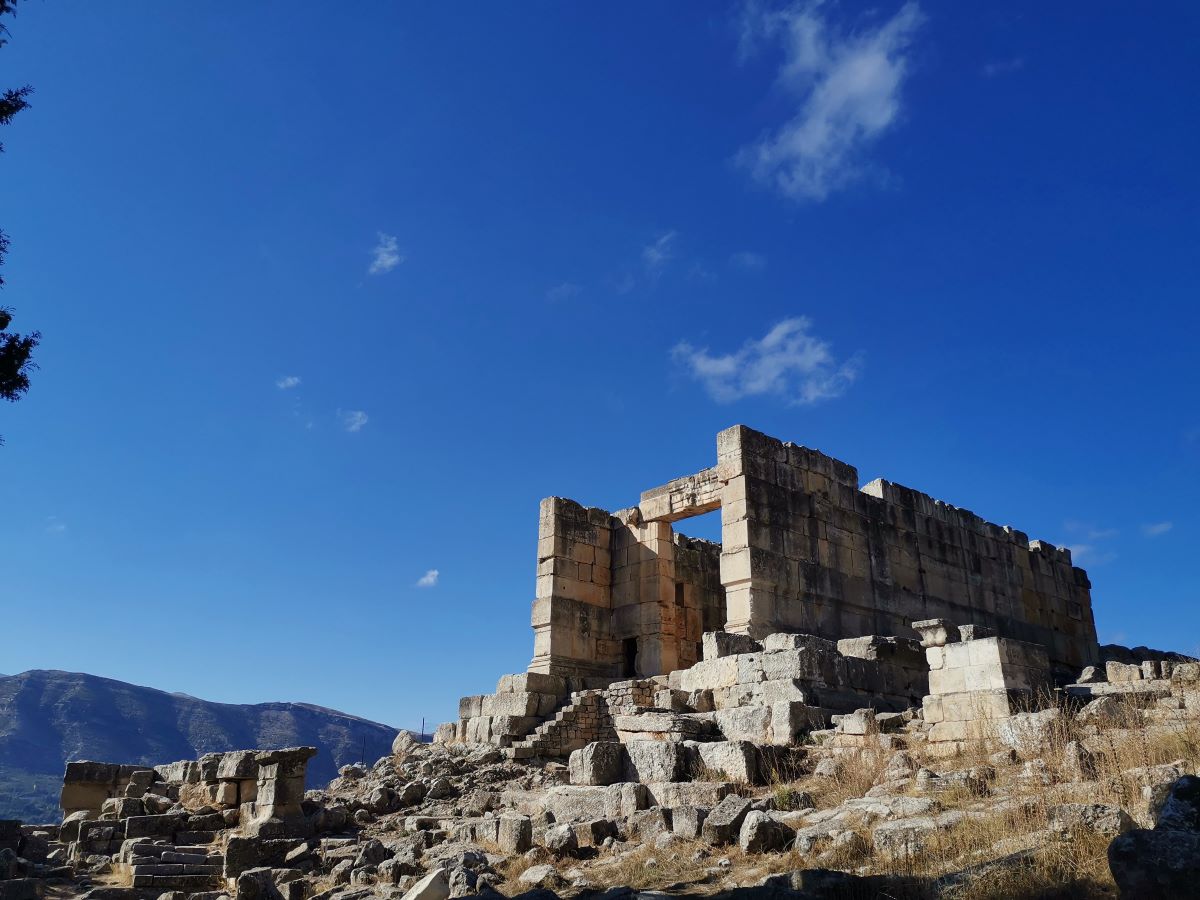The village of Sfireh has four temples that were built under Roman rule. The following article offers a brief description of each, and their adjacent monuments.
The pictures posted at the end of the article give an idea about each structure.
Structures
The main site of Sfireh is located at the footsteps of the highest point of the village, and has a complex made out of three temples, a summit shrine, an altar and a monument of unknown function, while the lowest point of the village has the remnants of one temple.
Starting from the main site, one can observe the following structures:
Temple (A)
Built between the 2nd and the 3rd century AD, this temple is the most imposing and well preserved of all.
Resting on megalithic blocks, it is open to the east, and has a tetrastyle prostyle plan (temples featuring a row of four columnson the front). The platform of an adyton (Holiest section of a Roman temple in the Near East) is equipped with a crypt rising in the cella (main inside space of the temple).
On the portal of the sanctuary, the decoration of the lintel features an eagle in high relief.
An inscription carved on the long north wall of the temple commemorates the construction of this wall in AD 283-284.
The work was carried out under the responsibility of three “diocets” and by the care of a master builder and two stonemasons. The text states the volume of material and the names of the overseers. It reads as follows: “This wing of the temple and that which surmounts the small door was built, during the year 595, for which one needed 1600 cubits (of stone), Aristonas, Diodoros and Silanos being diocets ; 1700 feet”.
A second inscription is engraved on the same block: “(realized) by the care of Gaius, architect, and of Vennius and Publius, stonemasons.”
The deity venerated at this temple is still unknown.
Temple (B)
This temple rises parallel to the large temple (A). Some archeologists propose that this structure was built around the 1st century AD by taking into consideration its interior architectural plan.
It is open to the east and of Ionic order. The cella, as well as the adyton platform are still preserved.
A Greek inscription was found near the temple that mentions the word “Heliopolitanus”. It refers to Jupiter Heliopolitanus, the Roman god of Heliopolis-Baalbek. This leads some archeologists to deduce that the temple was dedicated to him.
Unknown Building
Located north of Temple (B), it has a rectangular shape and on its northern walls rise two columns. Some archeologists gave a proposition that this might have been a Byzantine church. However, the function of the building is still unknown.
Altar
This monument rises about 2m on a small base and faces the entrance of Temple (B).
It may have been used to sacrifice animals on its top, light fires or other ceremonial acts.
Aphrodite Temple
This temple stands to the east and below the great temple (A), it opens to the north, and still has its temenos (sacred enclosure) and its cella is intact.
The temple structure underwent some architectural modifications, at least twice. The lintel of the door of the old structure was reused in the new one, bearing a Greek inscription that states the deity venerated at the temple – κυρία – “Mistress, Lady”.
Another dedication, on an entablature block belonging to the recent building, is addressed to the same deity, here called Celestial Aphrodite (Greek Goddess of beauty and pleasure).
Summit Shrine
The remains of a high-rise sanctuary occupy the top of the peak which dominates the other sanctuaries, accessible thru a hiking trail. This massif supported a columned monument placed on a platform. A couple of blocks with ornaments can be noticed, with no clear explanation of the reliefs.
Village Temple
This temple occupies the northern part of the modern village of Sfireh. Open to the east, the structure rests on a podium that retains only its cella.
The deity venerated at this temple is still unknown.
To reach this temple, one should go to the mosque of the village, known as “Sfireh Grand Mosque” and ask the locals for the “ruins neighborhood” (Hay Al-Asarat).
Karim Sokhn
Tour Operator & Tour Guide
References:
Julien Aliquot, La vie religieuse au Liban sous l’Empire Romain Julient Aliquot, 2009
